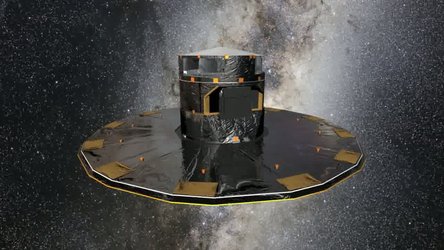Accept all cookies Accept only essential cookies See our Cookie Notice

About ESA
The European Space Agency (ESA) is Europe’s gateway to space. Its mission is to shape the development of Europe’s space capability and ensure that investment in space continues to deliver benefits to the citizens of Europe and the world.
Highlights
ESA - United space in Europe
This is ESA ESA facts Member States & Cooperating States Funding Director General Top management For Member State Delegations European vision European Space Policy ESA & EU Space Councils Responsibility & Sustainability Annual Report Calendar of meetings Corporate newsEstablishments & sites
ESA Headquarters ESA ESTEC ESA ESOC ESA ESRIN ESA EAC ESA ESAC Europe's Spaceport ESA ESEC ESA ECSAT Brussels Office Washington OfficeWorking with ESA
Business with ESA ESA Commercialisation Gateway Law at ESA Careers Cyber resilience at ESA IT at ESA Newsroom Partnerships Merchandising Licence Education Open Space Innovation Platform Integrity and Reporting Administrative Tribunal Health and SafetyMore about ESA
History ESA Historical Archives Exhibitions Publications Art & Culture ESA Merchandise Kids Diversity ESA Brand Centre ESA ChampionsLatest
Space in Member States
Find out more about space activities in our 23 Member States, and understand how ESA works together with their national agencies, institutions and organisations.
Science & Exploration
Exploring our Solar System and unlocking the secrets of the Universe
Go to topicAstronauts
Missions
Juice Euclid Webb Solar Orbiter BepiColombo Gaia ExoMars Cheops Exoplanet missions More missionsActivities
International Space Station Orion service module Gateway Concordia Caves & Pangaea BenefitsLatest
Space Safety
Protecting life and infrastructure on Earth and in orbit
Go to topicAsteroids
Asteroids and Planetary Defence Asteroid danger explained Flyeye telescope: asteroid detection Hera mission: asteroid deflection Near-Earth Object Coordination CentreSpace junk
About space debris Space debris by the numbers Space Environment Report In space refuelling, refurbishing and removingSafety from space
Clean Space ecodesign Zero Debris Technologies Space for Earth Supporting Sustainable DevelopmentLatest
Applications
Using space to benefit citizens and meet future challenges on Earth
Go to topicObserving the Earth
Observing the Earth Future EO Copernicus Meteorology Space for our climate Satellite missionsCommercialisation
ESA Commercialisation Gateway Open Space Innovation Platform Business Incubation ESA Space SolutionsLatest
Enabling & Support
Making space accessible and developing the technologies for the future
Go to topicBuilding missions
Space Engineering and Technology Test centre Laboratories Concurrent Design Facility Preparing for the future Shaping the Future Discovery and Preparation Advanced Concepts TeamSpace transportation
Space Transportation Ariane Vega Space Rider Future space transportation Boost! Europe's Spaceport Launches from Europe's Spaceport from 2012Latest

Gaia sky scan
Thank you for liking
You have already liked this page, you can only like it once!
This colourful streamer is created from real data that represents the viewing direction of ESA’s Gaia satellite as it scans across the sky.
Gaia’s mission is to make the largest, most precise 3D map of our Galaxy by surveying more than a thousand million stars. This goal relies on the systematic and repeating observation of star positions in two fields of view to detect any changes in an object’s motion through space. As such, Gaia is rotating slowly, sweeping its two telescopes, which are separated by 106.5º, across the entire celestial sphere to make four complete rotations per day.
At the same time, its spin axis changes orientation around the Sun with a period of about 63 days, allowing different parts of the sky to be scanned. This approach builds up an interlocking grid of stellar positions and motions.
While star maps have provided the focus of previous image releases, this image represents the motion of the satellite itself across the full sky.
Gaia’s attitude is plotted every second with two dots: one to represent each of the two telescopes at that moment in time. The positions are plotted in celestial coordinates: right ascension (horizontal axis) and declination (vertical axis), which can be imagined as lines of longitude and latitude printed on the inside of the celestial sphere.
The colours indicate the direction of the scan, the key for which is indicated in the border of the image. The direction of the scan with respect to north (up) can be found by starting in the centre of the image and moving towards the border to the appropriate colour. Each colour around the border covers a range of 18º.
Zooming in reveals first a cross weave-like pattern, and ultimately the individual dots. The highest density of overlapping pattern represents the areas of sky that have been scanned multiple times in different directions already, while the lower density regions were scanned fewer times and in fewer different directions. Eventually the gaps will close, as Gaia makes more and more repeated scans of the sky.
Gaia was launched on 19 December 2013 and began routine operations in July 2014. The first catalogue of more than a billion stars, based on the first 14 months of scanning, was published in September 2016. The image shown here was created from Gaia’s movements between 1 October 2014 and 31 May 2016. This corresponds to the period that includes the second data release, which is scheduled for April 2018.
-
CREDIT
ESA/Gaia -
LICENCE
ESA Standard Licence

Gaia sky scan

Gaia scanning the sky

Artist's impression of the Gaia satellite

Gaia scanning the sky















 Germany
Germany
 Austria
Austria
 Belgium
Belgium
 Denmark
Denmark
 Spain
Spain
 Estonia
Estonia
 Finland
Finland
 France
France
 Greece
Greece
 Hungary
Hungary
 Ireland
Ireland
 Italy
Italy
 Luxembourg
Luxembourg
 Norway
Norway
 The Netherlands
The Netherlands
 Poland
Poland
 Portugal
Portugal
 Czechia
Czechia
 Romania
Romania
 United Kingdom
United Kingdom
 Slovenia
Slovenia
 Sweden
Sweden
 Switzerland
Switzerland
























